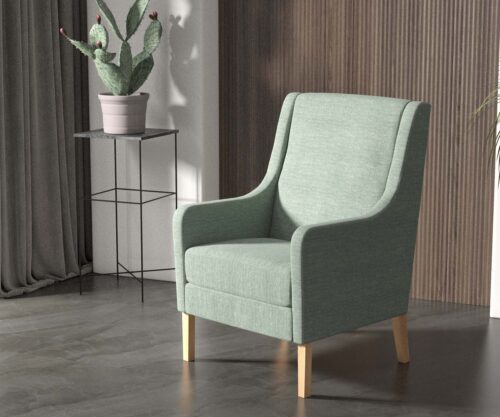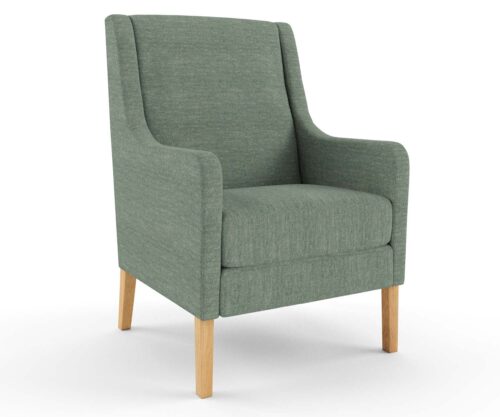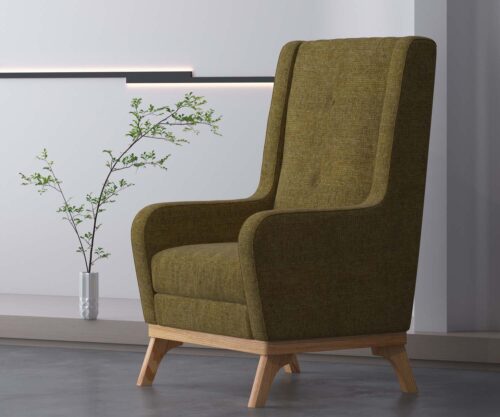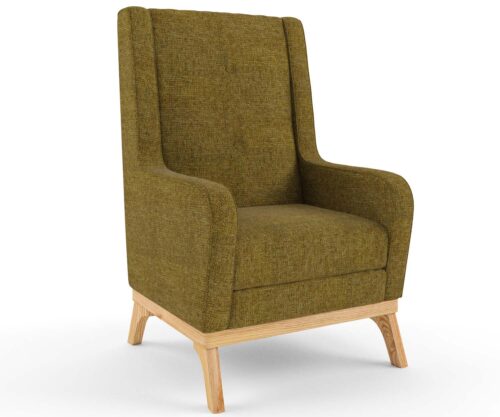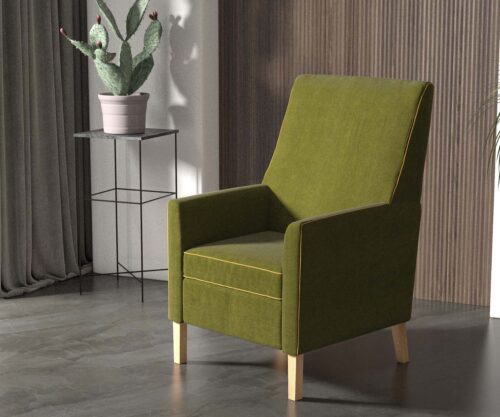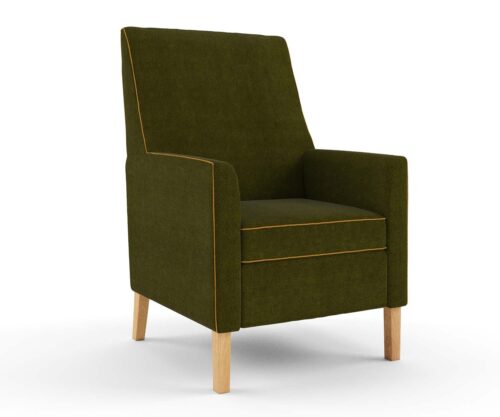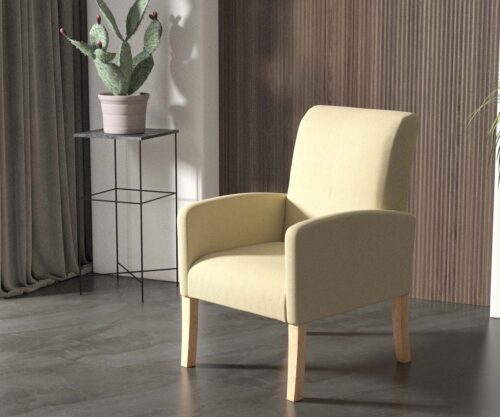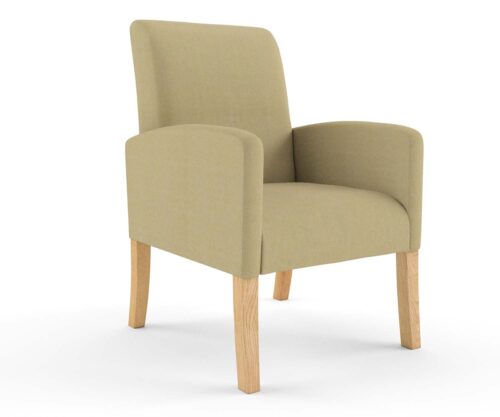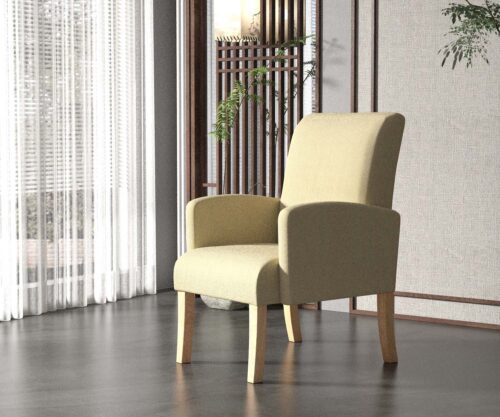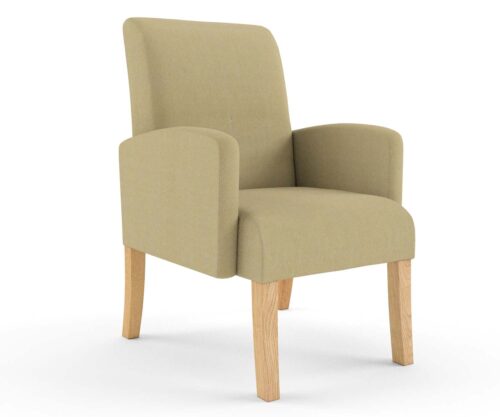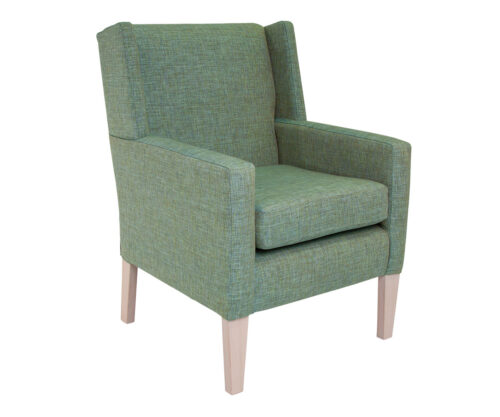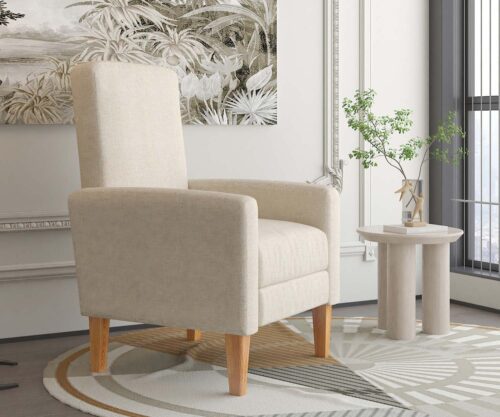The Impact of Interior Design on Elderly People in Aged Care and Retirement Living: What the Research Shows

In the intricate dance between architecture and emotion, the field of interior design has emerged as a powerful conductor. The influence of interior design on aesthetics is widely acknowledged. However, its profound impact on the lives of elderly individuals, especially those in aged care facilities and retirement villages, is a burgeoning area of research. Recent studies have illuminated how thoughtful interior design can significantly improve the health, well-being, and overall quality of life for seniors. In this article, we delve into the realm of evidence-backed insights to unveil the transformative potential of interior design for the elderly population.
Aged Care Quality Standards and Interior Design
The impact of interior design on elderly individuals holds a direct correlation to the Australian Aged Care Quality Standards, a framework designed to ensure the well-being and rights of residents in aged care facilities. These standards emphasize the importance of creating an environment that promotes residents’ dignity, autonomy, and quality of life. Interior design plays a pivotal role in meeting these standards by addressing key principles such as safety, comfort, and individualized care. The Standards underscore the significance of providing an environment that enhances residents’ emotional and physical well-being. This aligns perfectly with the findings of research on interior design’s influence on elderly populations. As interior design choices encompass aspects ranging from ergonomic furniture to sensory engagement, they contribute to a holistic approach. This approach meets the standards’ criteria for resident-centered care and nurturing service environments.
Creating a Nurturing Space: The Role of Colours and Lighting
The hues that grace the walls and the play of light within a space are not just visual aesthetics; they are catalysts of emotion. Research has unveiled that colour palettes can elicit specific feelings, impacting mood and comfort levels. Warm, earthy tones and soft pastels have been found to create a soothing and nurturing atmosphere, particularly beneficial for seniors seeking emotional solace. Avoiding stark contrasts helps individuals with cognitive impairments navigate their environment with ease, reducing confusion and anxiety.
Natural light is a conduit to well-being. Studies have demonstrated that access to daylight can improve sleep patterns, enhance mood, and regulate circadian rhythms. For elderly residents, basking in the sunlit embrace of natural light can offer a renewed sense of vitality. This addresses issues such as depression and sleep disturbances often experienced in care facilities.
Functional Comfort: Furniture’s Crucial Role
Research demonstrates that furniture plays a pivotal role in interior design for elderly individuals, significantly impacting their comfort, mobility, and overall well-being. Ergonomically designed furniture has been proven to enhance physical comfort and safety. It does so by accommodating the unique needs of seniors, such as reduced mobility and posture challenges. Studies have shown that adjustable furniture, like recliners and lift chairs, not only improve comfort but also empower residents to maintain their independence. Furniture choices also influence social engagement and emotional well-being by facilitating interactions among residents. Additionally, furniture materials and textures can contribute to sensory stimulation, promoting cognitive engagement and reducing feelings of isolation. The research consistently underscores that thoughtful furniture selection enhances the living experience of elderly individuals. This aligns with the broader goals of creating supportive, age-friendly environments that cater to their unique needs and preferences.
Nature as a Healing Partner: Biophilic Design
Bringing the outdoors indoors is more than a design trend; it’s a therapeutic approach. Biophilic design integrates natural elements into interior spaces, utilizing elements like plants, water features, and natural textures to lower stress levels and foster a sense of connection with the natural world. For elderly individuals seeking tranquility amidst the challenges of aging, this design philosophy offers a profound source of emotional comfort and relief.
Examples of biophilic design
- A common area adorned with potted plants not only adds visual appeal but also purifies the air, contributing to a healthier environment.
- Water features, such as indoor fountains, offer a soothing auditory and visual experience, promoting relaxation and reducing stress.
- Textures and materials resembling wood, stone, or natural fabrics create a tactile connection with the outdoors, fostering a sense of tranquility.
- Even views of nature, simulated through artistic murals or strategically placed windows, provide a visual escape that can positively impact mood and overall well-being.
By integrating these biophilic design elements, care facilities can create spaces that echo the restorative effects of nature, offering elderly residents a renewed connection to the world outside.
Fostering Social Engagement
Loneliness can be a formidable challenge for elderly residents. Interior design steps in as a silent catalyst for social interactions. Common areas with inviting furniture arrangements encourage conversations, shared activities, and the formation of meaningful bonds among residents. By fostering connections, interior design becomes a conduit for emotional support and well-being.
Personalization and Emotional Uplifting
Personalization isn’t just about embellishing living spaces; it’s about infusing them with memories and personal significance. Allowing residents to adorn their surroundings with cherished items, family photographs, and familiar mementos fosters a sense of belonging. For seniors grappling with cognitive challenges, this personal touch serves as an emotional anchor, creating an environment that resonates with their individuality.
Promoting Calmness: Designing for Reduced Anxiety
Anxiety can be a persistent companion for seniors, particularly those with cognitive impairments. Interior design steps in as a harbinger of solace. Through intuitive layouts, consistent design elements, and clear wayfinding cues, spaces become more navigable and less intimidating. This thoughtful design philosophy not only reduces anxiety but also enhances cognitive ease and emotional well-being.
A Snapshot of the Research
There has been extensive research conducted on the impact of interior design on the well-being and quality of life of elderly individuals. Interior design elements such as color, lighting, furniture layout, materials, and overall spatial design can have significant effects on physical, cognitive, emotional, and social aspects of elderly residents’ lives in care facilities.
Key studies and findings
- “The Role of Interior Design Elements in Facilities for Older People” (Evans et al., 2002):
This study investigated the impact of interior design elements on the well-being of elderly residents in long-term care facilities. The research found that well-designed interiors, including appropriate lighting, comfortable furniture, and accessible spaces, positively affected residents’ satisfaction, comfort, and overall quality of life. - “Impact of Interior Design of a Healing Environment on Perceived Health, Quality of Care, and Health Service Use” (Ulrich et al., 2008):
This study examined the effect of a healing environment, including interior design elements, on elderly patients’ perceptions of health and well-being in a healthcare setting. The results showed that a well-designed environment with natural elements, comfortable furnishings, and soothing colors positively influenced patients’ well-being and contributed to shorter hospital stays. - “Interior Design Preferences of Older Adults” (McCunn et al., 2011):
This research explored the interior design preferences of older adults living independently. It found that factors such as comfort, accessibility, safety, and familiarity were important to older adults when choosing interior design elements for their living spaces. - “The Influence of Home-Like Design on Patient and Staff Well-Being in Residential Care Homes” (Brawley and Hitchings, 2015):
This study investigated the impact of home-like design elements in residential care homes for older adults. The research highlighted that creating environments that mimic the familiarity and comfort of home positively influenced the well-being and satisfaction of residents and staff. - “Impact of the Physical Environment on Residents with Dementia in Residential Care Settings: A Review of the Empirical Literature” (Day et al., 2019):
This review examined the impact of the physical environment on residents with dementia. It found that interior design elements such as wayfinding cues, clear signage, and familiar materials were crucial in supporting the orientation and overall well-being of individuals with dementia. - “Designing Age-Friendly Indoor Environments: A Cross-Sectional Examination of the Association Between Different Housing-related Factors and the Life Satisfaction of Older Adults” (Iwarsson et al., 2020):
This study explored the relationship between housing-related factors, including interior design, and the life satisfaction of older adults. The findings underscored the importance of creating age-friendly indoor environments that promote residents’ well-being and life satisfaction.
These studies, among others, highlight the importance of thoughtful interior design in aged care facilities and its impact on residents’ physical comfort, emotional well-being, cognitive stimulation, and social engagement. Interior design that considers the unique needs and preferences of elderly individuals can contribute to creating supportive, nurturing, and life-enhancing living environments.
Orchestrating Wellness Through Design
The journey through the labyrinth of interior design’s impact on elderly individuals leads us to a resounding realization: it’s more than just aesthetics. It’s about crafting spaces that resonate with emotion, comfort, and vitality. Recent studies and data have unequivocally demonstrated that interior design can significantly improve the health, well-being, and overall quality of life for seniors. By embracing innovative design strategies, we can shape environments that honor the dignity, happiness, and well-being of our treasured elders. Interior design is not just about arranging furniture; it’s about orchestrating a symphony of wellness within the spaces our seniors call home.
FAQs About the Impact of Interior Design on Elderly People
How does interior design impact the well-being of elderly individuals?
Interior design significantly influences the well-being of elderly individuals by creating environments that support their physical, emotional, and cognitive needs.
What role does lighting play in interior design for the elderly?
Adequate and well-planned lighting is crucial for elderly individuals. It enhances visibility, reduces the risk of falls, and positively impacts mood and circadian rhythms.
How can interior design promote safety for elderly residents?
Interior design can promote safety by incorporating features such as non-slip flooring, grab bars, and clear pathways to prevent accidents and ensure ease of movement.
Are there specific color schemes that are beneficial for elderly individuals in interior design?
Soft, contrasting color schemes are often preferred for elderly individuals as they enhance visibility and create a calming atmosphere. High color contrast aids in distinguishing different elements within the environment.
Can interior design influence social interaction among elderly residents?
Yes, thoughtful interior design, including communal spaces, seating arrangements, and engaging layouts, can foster social interaction and create a sense of community among elderly residents.
How does furniture selection impact the comfort of elderly individuals?
Properly chosen furniture with ergonomic design and comfortable materials contributes to the physical comfort of elderly individuals, supporting their needs for relaxation and ease of use.
What considerations should be made for creating dementia-friendly interior design?
Dementia-friendly design involves minimizing clutter, incorporating clear wayfinding cues, and creating familiar and comfortable spaces to support individuals with cognitive impairments.
How can interior design address the sensory needs of elderly individuals?
Interior design can address sensory needs by incorporating elements like soothing textures, comfortable seating, and acoustic solutions to create a pleasant and sensory-friendly environment.
What role does nature or biophilic design play in interior spaces for the elderly?
Integrating natural elements or biophilic design, such as indoor plants and natural lighting, can have positive effects on mood, reduce stress, and enhance the overall well-being of elderly individuals.
How can interior design contribute to maintaining independence for elderly residents?
Interior design can support independence by incorporating features like accessible layouts, adaptive technologies, and furniture that allows for easy navigation and use without assistance.
High Back Armchairs are a Popular Choice in Aged Care
High back armchairs provide ample support to the neck, back, and shoulders, promoting proper posture and reducing the risk of musculoskeletal discomfort.
More News
The Impact of Interior Design on Elderly People in Aged Care and Retirement Living: What the Research Shows

In the intricate dance between architecture and emotion, the field of interior design has emerged as a powerful conductor. The influence of interior design on aesthetics is widely acknowledged. However, its profound impact on the lives of elderly individuals, especially those in aged care facilities and retirement villages, is a burgeoning area of research. Recent studies have illuminated how thoughtful interior design can significantly improve the health, well-being, and overall quality of life for seniors. In this article, we delve into the realm of evidence-backed insights to unveil the transformative potential of interior design for the elderly population.
Aged Care Quality Standards and Interior Design
The impact of interior design on elderly individuals holds a direct correlation to the Australian Aged Care Quality Standards, a framework designed to ensure the well-being and rights of residents in aged care facilities. These standards emphasize the importance of creating an environment that promotes residents’ dignity, autonomy, and quality of life. Interior design plays a pivotal role in meeting these standards by addressing key principles such as safety, comfort, and individualized care. The Standards underscore the significance of providing an environment that enhances residents’ emotional and physical well-being. This aligns perfectly with the findings of research on interior design’s influence on elderly populations. As interior design choices encompass aspects ranging from ergonomic furniture to sensory engagement, they contribute to a holistic approach. This approach meets the standards’ criteria for resident-centered care and nurturing service environments.
Creating a Nurturing Space: The Role of Colours and Lighting
The hues that grace the walls and the play of light within a space are not just visual aesthetics; they are catalysts of emotion. Research has unveiled that colour palettes can elicit specific feelings, impacting mood and comfort levels. Warm, earthy tones and soft pastels have been found to create a soothing and nurturing atmosphere, particularly beneficial for seniors seeking emotional solace. Avoiding stark contrasts helps individuals with cognitive impairments navigate their environment with ease, reducing confusion and anxiety.
Natural light is a conduit to well-being. Studies have demonstrated that access to daylight can improve sleep patterns, enhance mood, and regulate circadian rhythms. For elderly residents, basking in the sunlit embrace of natural light can offer a renewed sense of vitality. This addresses issues such as depression and sleep disturbances often experienced in care facilities.
Functional Comfort: Furniture’s Crucial Role
Research demonstrates that furniture plays a pivotal role in interior design for elderly individuals, significantly impacting their comfort, mobility, and overall well-being. Ergonomically designed furniture has been proven to enhance physical comfort and safety. It does so by accommodating the unique needs of seniors, such as reduced mobility and posture challenges. Studies have shown that adjustable furniture, like recliners and lift chairs, not only improve comfort but also empower residents to maintain their independence. Furniture choices also influence social engagement and emotional well-being by facilitating interactions among residents. Additionally, furniture materials and textures can contribute to sensory stimulation, promoting cognitive engagement and reducing feelings of isolation. The research consistently underscores that thoughtful furniture selection enhances the living experience of elderly individuals. This aligns with the broader goals of creating supportive, age-friendly environments that cater to their unique needs and preferences.
Nature as a Healing Partner: Biophilic Design
Bringing the outdoors indoors is more than a design trend; it’s a therapeutic approach. Biophilic design integrates natural elements into interior spaces, utilizing elements like plants, water features, and natural textures to lower stress levels and foster a sense of connection with the natural world. For elderly individuals seeking tranquility amidst the challenges of aging, this design philosophy offers a profound source of emotional comfort and relief.
Examples of biophilic design
- A common area adorned with potted plants not only adds visual appeal but also purifies the air, contributing to a healthier environment.
- Water features, such as indoor fountains, offer a soothing auditory and visual experience, promoting relaxation and reducing stress.
- Textures and materials resembling wood, stone, or natural fabrics create a tactile connection with the outdoors, fostering a sense of tranquility.
- Even views of nature, simulated through artistic murals or strategically placed windows, provide a visual escape that can positively impact mood and overall well-being.
By integrating these biophilic design elements, care facilities can create spaces that echo the restorative effects of nature, offering elderly residents a renewed connection to the world outside.
Fostering Social Engagement
Loneliness can be a formidable challenge for elderly residents. Interior design steps in as a silent catalyst for social interactions. Common areas with inviting furniture arrangements encourage conversations, shared activities, and the formation of meaningful bonds among residents. By fostering connections, interior design becomes a conduit for emotional support and well-being.
Personalization and Emotional Uplifting
Personalization isn’t just about embellishing living spaces; it’s about infusing them with memories and personal significance. Allowing residents to adorn their surroundings with cherished items, family photographs, and familiar mementos fosters a sense of belonging. For seniors grappling with cognitive challenges, this personal touch serves as an emotional anchor, creating an environment that resonates with their individuality.
Promoting Calmness: Designing for Reduced Anxiety
Anxiety can be a persistent companion for seniors, particularly those with cognitive impairments. Interior design steps in as a harbinger of solace. Through intuitive layouts, consistent design elements, and clear wayfinding cues, spaces become more navigable and less intimidating. This thoughtful design philosophy not only reduces anxiety but also enhances cognitive ease and emotional well-being.
A Snapshot of the Research
There has been extensive research conducted on the impact of interior design on the well-being and quality of life of elderly individuals. Interior design elements such as color, lighting, furniture layout, materials, and overall spatial design can have significant effects on physical, cognitive, emotional, and social aspects of elderly residents’ lives in care facilities.
Key studies and findings
- “The Role of Interior Design Elements in Facilities for Older People” (Evans et al., 2002):
This study investigated the impact of interior design elements on the well-being of elderly residents in long-term care facilities. The research found that well-designed interiors, including appropriate lighting, comfortable furniture, and accessible spaces, positively affected residents’ satisfaction, comfort, and overall quality of life. - “Impact of Interior Design of a Healing Environment on Perceived Health, Quality of Care, and Health Service Use” (Ulrich et al., 2008):
This study examined the effect of a healing environment, including interior design elements, on elderly patients’ perceptions of health and well-being in a healthcare setting. The results showed that a well-designed environment with natural elements, comfortable furnishings, and soothing colors positively influenced patients’ well-being and contributed to shorter hospital stays. - “Interior Design Preferences of Older Adults” (McCunn et al., 2011):
This research explored the interior design preferences of older adults living independently. It found that factors such as comfort, accessibility, safety, and familiarity were important to older adults when choosing interior design elements for their living spaces. - “The Influence of Home-Like Design on Patient and Staff Well-Being in Residential Care Homes” (Brawley and Hitchings, 2015):
This study investigated the impact of home-like design elements in residential care homes for older adults. The research highlighted that creating environments that mimic the familiarity and comfort of home positively influenced the well-being and satisfaction of residents and staff. - “Impact of the Physical Environment on Residents with Dementia in Residential Care Settings: A Review of the Empirical Literature” (Day et al., 2019):
This review examined the impact of the physical environment on residents with dementia. It found that interior design elements such as wayfinding cues, clear signage, and familiar materials were crucial in supporting the orientation and overall well-being of individuals with dementia. - “Designing Age-Friendly Indoor Environments: A Cross-Sectional Examination of the Association Between Different Housing-related Factors and the Life Satisfaction of Older Adults” (Iwarsson et al., 2020):
This study explored the relationship between housing-related factors, including interior design, and the life satisfaction of older adults. The findings underscored the importance of creating age-friendly indoor environments that promote residents’ well-being and life satisfaction.
These studies, among others, highlight the importance of thoughtful interior design in aged care facilities and its impact on residents’ physical comfort, emotional well-being, cognitive stimulation, and social engagement. Interior design that considers the unique needs and preferences of elderly individuals can contribute to creating supportive, nurturing, and life-enhancing living environments.
Orchestrating Wellness Through Design
The journey through the labyrinth of interior design’s impact on elderly individuals leads us to a resounding realization: it’s more than just aesthetics. It’s about crafting spaces that resonate with emotion, comfort, and vitality. Recent studies and data have unequivocally demonstrated that interior design can significantly improve the health, well-being, and overall quality of life for seniors. By embracing innovative design strategies, we can shape environments that honor the dignity, happiness, and well-being of our treasured elders. Interior design is not just about arranging furniture; it’s about orchestrating a symphony of wellness within the spaces our seniors call home.
FAQs About the Impact of Interior Design on Elderly People
How does interior design impact the well-being of elderly individuals?
Interior design significantly influences the well-being of elderly individuals by creating environments that support their physical, emotional, and cognitive needs.
What role does lighting play in interior design for the elderly?
Adequate and well-planned lighting is crucial for elderly individuals. It enhances visibility, reduces the risk of falls, and positively impacts mood and circadian rhythms.
How can interior design promote safety for elderly residents?
Interior design can promote safety by incorporating features such as non-slip flooring, grab bars, and clear pathways to prevent accidents and ensure ease of movement.
Are there specific color schemes that are beneficial for elderly individuals in interior design?
Soft, contrasting color schemes are often preferred for elderly individuals as they enhance visibility and create a calming atmosphere. High color contrast aids in distinguishing different elements within the environment.
Can interior design influence social interaction among elderly residents?
Yes, thoughtful interior design, including communal spaces, seating arrangements, and engaging layouts, can foster social interaction and create a sense of community among elderly residents.
How does furniture selection impact the comfort of elderly individuals?
Properly chosen furniture with ergonomic design and comfortable materials contributes to the physical comfort of elderly individuals, supporting their needs for relaxation and ease of use.
What considerations should be made for creating dementia-friendly interior design?
Dementia-friendly design involves minimizing clutter, incorporating clear wayfinding cues, and creating familiar and comfortable spaces to support individuals with cognitive impairments.
How can interior design address the sensory needs of elderly individuals?
Interior design can address sensory needs by incorporating elements like soothing textures, comfortable seating, and acoustic solutions to create a pleasant and sensory-friendly environment.
What role does nature or biophilic design play in interior spaces for the elderly?
Integrating natural elements or biophilic design, such as indoor plants and natural lighting, can have positive effects on mood, reduce stress, and enhance the overall well-being of elderly individuals.
How can interior design contribute to maintaining independence for elderly residents?
Interior design can support independence by incorporating features like accessible layouts, adaptive technologies, and furniture that allows for easy navigation and use without assistance.
High Back Armchairs are a Popular Choice in Aged Care
High back armchairs provide ample support to the neck, back, and shoulders, promoting proper posture and reducing the risk of musculoskeletal discomfort.
Commercial furniture by room
Based in Brisbane, we’re an Australian manufacturer of aged care furniture, retirement living furniture, hospital & healthcare furniture, hotel & accommodation furniture and student accommodation furniture. We also supply a range of commercial office furniture.
Discover the FHG Look Book: Your Source of Inspiration for Quality Australian-Made Commercial Furniture
- Quality Craftsmanship: See why we’ve been a trusted partner for over 25 years.
- Local Excellence: Learn how our Brisbane team ensures the highest standards.
- Inspiration and Ideas: Find innovative furniture solutions for any environment.
Don’t miss the opportunity to transform your commercial space with FHG’s expertly crafted furniture. Download the FHG Look Book today and start your journey towards exceptional design and quality.

